Advertisement
Grab your lab coat. Let's get started
Welcome!
Welcome!
Create an account below to get 6 C&EN articles per month, receive newsletters and more - all free.
It seems this is your first time logging in online. Please enter the following information to continue.
As an ACS member you automatically get access to this site. All we need is few more details to create your reading experience.
Not you? Sign in with a different account.
Not you? Sign in with a different account.
ERROR 1
ERROR 1
ERROR 2
ERROR 2
ERROR 2
ERROR 2
ERROR 2
Password and Confirm password must match.
If you have an ACS member number, please enter it here so we can link this account to your membership. (optional)
ERROR 2
ACS values your privacy. By submitting your information, you are gaining access to C&EN and subscribing to our weekly newsletter. We use the information you provide to make your reading experience better, and we will never sell your data to third party members.
Forensic Science
Fingerprints are more than just patterns; they’re chemical identities
Researchers are developing chemical analyses and advanced DNA techniques to get more evidence out of fingerprints
by Kerri Jansen
March 10, 2019
| A version of this story appeared in
Volume 97, Issue 10

On March 24, 1994, a man walking his dog in Albany, Georgia, found the body of a woman named Angela Sizemore, who had been raped and murdered and left in the front seat of her SUV behind an apartment complex. When they arrived at the scene, crime-scene technicians collected semen from the body and fingerprints from the vehicle in an attempt to identify the killer. At the time, DNA analysis was accurate enough to pinpoint a suspect on the basis of the genetic code within sperm cells, and fingerprint analysis could ID a suspect from the loop-and-whorl patterns left behind by substances on the skin.
The semen analysis identified Georgia resident Marcus Ray Johnson as having had sex with Sizemore sometime before her death. Witnesses also placed someone fitting Johnson’s description near the site where police believed Sizemore was murdered the previous night. Investigators collected a total of 38 fingerprints from the victim’s vehicle; all but one was too smudged to use properly. The one print that was clear went to AFIS, the digital fingerprint database commonly used by law enforcement, but it wasn’t a match for any prints logged there.
Johnson claimed that he’d had consensual sex with Sizemore on the night of the murder after meeting her in a bar and had left her alive. He was convicted of murder and sentenced to death row, where he continued to assert his innocence.
Today, scientists are working to get more from fingerprints than just loops and whorls, developing methods to analyze molecules such as DNA, amino acids, or explosives in fingerprint residues. Years after his conviction, Johnson’s lawyers hoped new techniques, applied to the prints collected in 1994, might uncover information that would exonerate their client.
With these methods, scientists can now work with samples containing as little as 500 nL of material, making the chemical analysis of fingerprints more feasible. For instance, a fingerprint contains much less DNA than the cheek swabs for which most forensic processes have been optimized. It’s only in the past decade that chemical analysis techniques have become sensitive enough to glean a biological profile from such a small sample, says Tracey Dawson Cruz, a forensic molecular biologist at Virginia Commonwealth University. The idea is not necessarily to do away with pattern comparison during fingerprint analysis—and, indeed, other scientists are focusing on ways to improve the clarity of the pattern itself—but instead to bolster the analysis with more information. Smudged prints needn’t be a completely lost cause.
In some older cases, DNA from archived fingerprints may be “the only chance” for biological evidence, Dawson Cruz says. She is among those working to extract more from fingerprints, tapping into the potential treasure trove of chemical information hidden within.
As Johnson neared the end of his permitted appeal period nearly 20 years after the murder, his lawyers, seeking a final opportunity to uncover exculpatory physical evidence, asked the court to allow DNA analysis of the fingerprints collected in 1994. Georgia’s state forensic laboratory had never done such an analysis, but Johnson’s lawyers came to court armed with results from VCU scientists, including Dawson Cruz. These researchers had been exploring the possibility of retrieving usable DNA profiles from fingerprints collected decades earlier.
Prints with history
Fingerprinting research usually focuses on latent fingerprints. These patterned deposits of sweat, skin cells, and other substances are often smudged, small, or incomplete when collected from a crime scene, as opposed to the pristine sets of prints typically collected with an ink pad in a controlled setting. Latent prints are one of the oldest forms of forensic evidence—having connected criminal to crime scene for more than a century—and are based on the assumption that everyone has a unique set of patterns on their fingertips.
More than dust
Crime-scene investigators use a variety of developing agents to visualize latent prints from a crime scene, depending on the surface where the prints were left. Here are a few of the most popular reagents.
Cyanoacrylate
Considered the gold standard for developing fingerprints left on nonporous surfaces, cyanoacrylate fumes react with fingerprint residues to produce a stable, white pattern.
\n
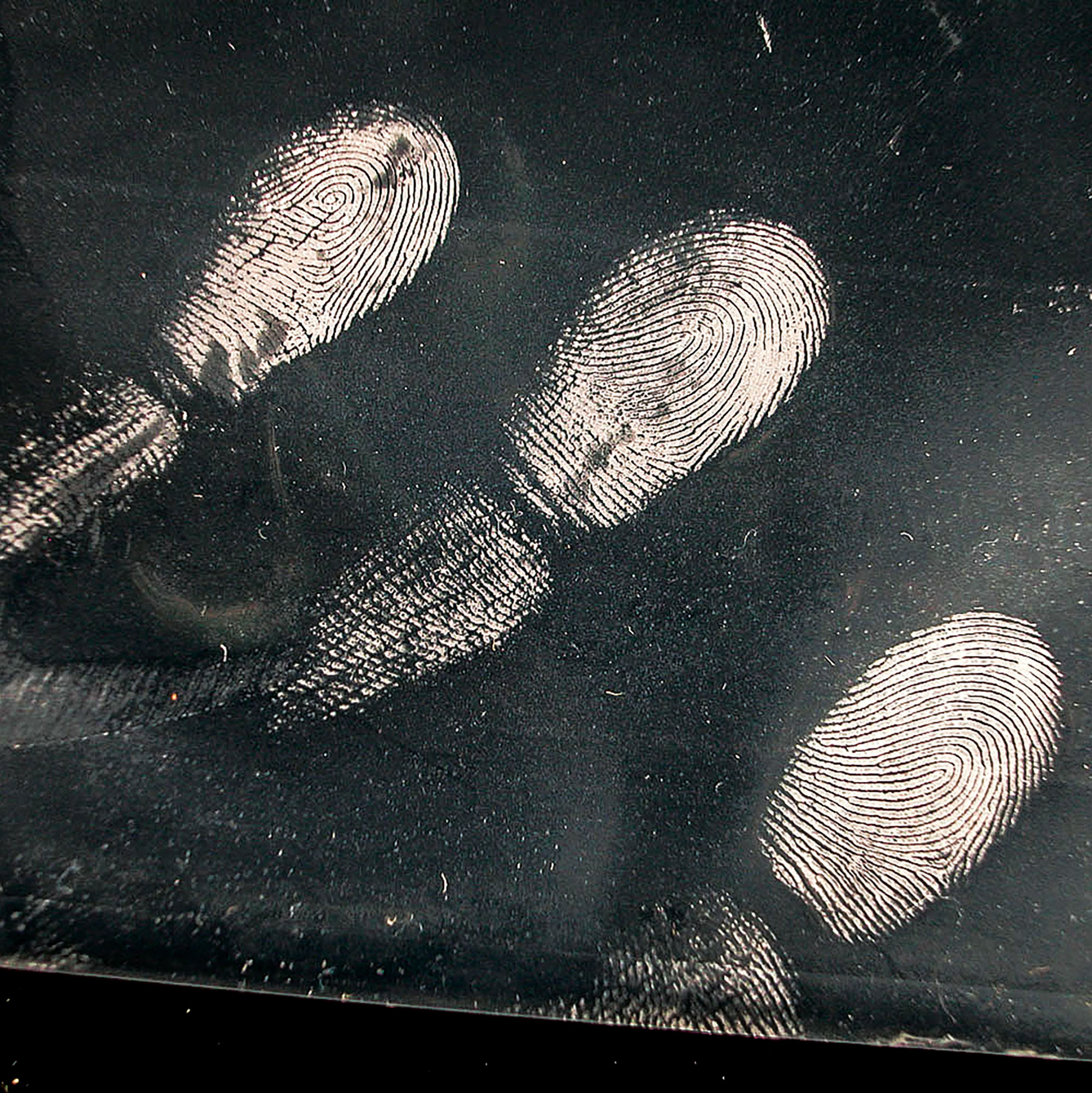
Ninhydrin
Reacts with amino acids in the fingerprint to stain the fingerprint pattern deep blue or purple on paper and other porous surfaces.

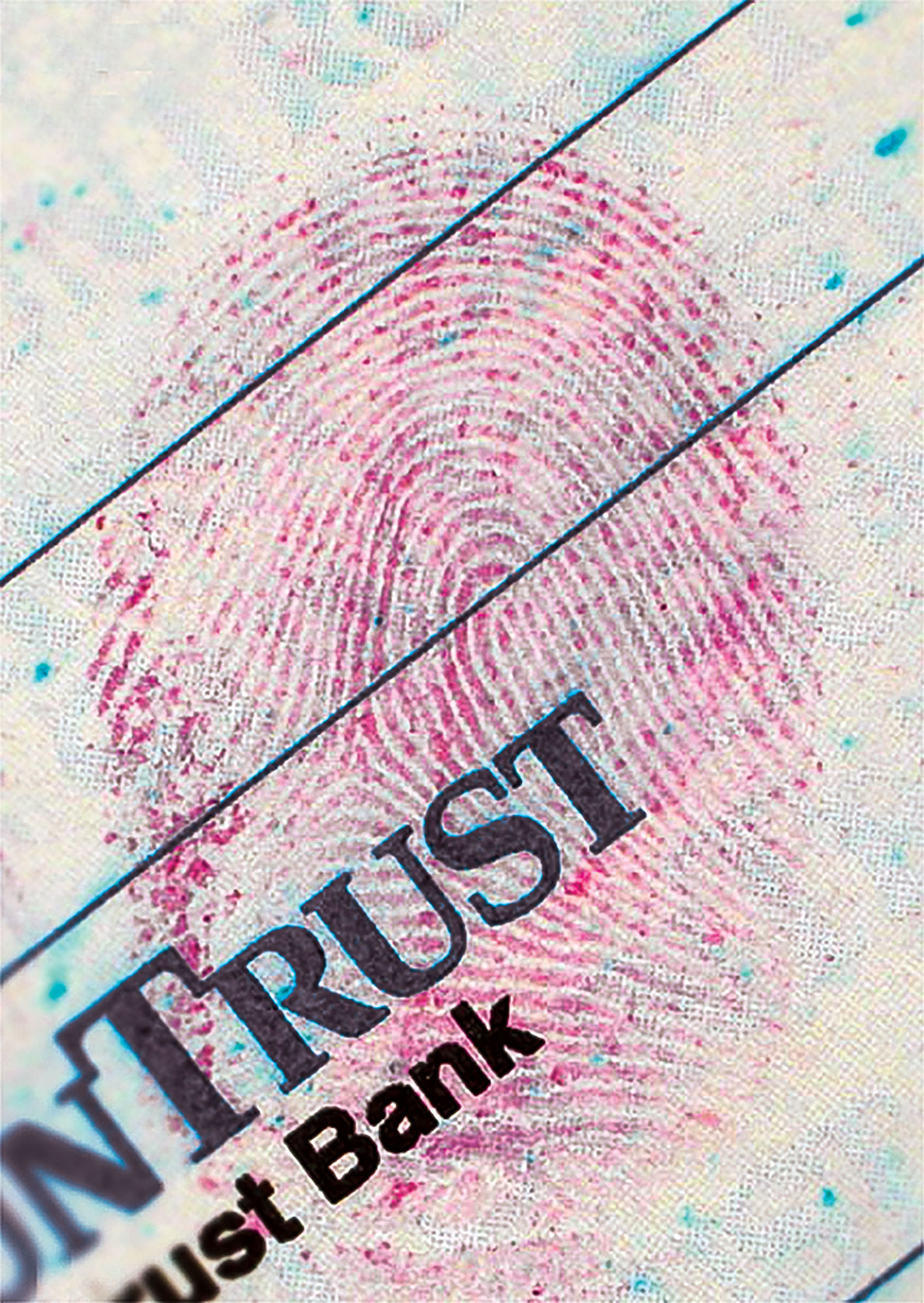
1,2-Indanedione
Developed as a safer, cheaper alternative to 1,8-diazafluoren-9-one, which was popularly used to develop fingerprints on porous surfaces. Both reagents make fingerprints glow when hit by certain wavelengths of light.


Today, latent fingerprint collection is “a staple of every crime scene” where there are surfaces from which prints can be lifted, says Carl Speckels, a forensic scientist at the Phoenix Police Department’s forensic laboratory. Forensic technicians typically visualize the prints by dusting them with powder and lifting them with adhesive tape, using a dye stain, or fuming the area with cyanoacrylate (vaporized superglue). The prints are then photographed or scanned. At that point, an examiner must decide whether a collected print is good enough to attempt an individualization. This means comparing the latent fingerprint with a fingerprint from a known subject and determining if there is enough information in the ridges and whorls to suggest both samples were left by the same person. Forensic scientists use the term individualization instead of the word match because the analysis is about probability, not necessarily certainty.
In Phoenix, Speckels says, about 30–40% of latent prints are determined to be high enough quality to send through AFIS. Some of the remaining prints are compared manually by a human fingerprint analyst, and the rest—smudged or otherwise corrupted—are simply stored as evidence, often pressed between the adhesive tape used to lift them and a paper backing card. For decades, fingerprint individualization was the only reason for lifting latent prints from a crime scene.
Marilyn Miller, a VCU forensic scientist whom Johnson’s lawyers asked for assistance reopening his case, saw potential in the 37 smudged and low-quality latent prints stored away. She brought the project to Dawson Cruz with the hope that she would be able to find a way to extract usable DNA from the archived samples—samples that had been sealed away simply to preserve their ridge patterns, with no consideration given to conserving genetic information.
Dawson Cruz found that the type of black powder used to dust for prints in 1994 did not significantly interfere with her ability to extract DNA from them; neither did cyanoacrylate fuming. In fact, the DNA, housed in skin cells, was protected and preserved in its tape-and-card sandwich. The challenge was to remove the DNA from the substrate while minimizing damage and loss of genetic material and while isolating and concentrating as much of the sample as possible.
Dawson Cruz and colleagues examined every part of the DNA-extraction process with an eye toward optimizing protocols and getting as much usable genetic information from archived fingerprints as possible (J. Forensic Sci. 2017, DOI: 10.1111/1556-4029.13504). Working with fingerprint samples ranging in age from 0 to 28 years old, the VCU team found they could extract the most skin cells, and thus DNA, by pulling apart the fingerprint sandwich of tape and paper, cutting each layer into strips, and then immersing the strips in a solution designed to break open cell membranes and release the DNA.
These discoveries, as well as other recommendations, could have broader implications for improving the analysis of DNA from fingerprints in present-day investigations, Dawson Cruz says. That area of research is young—beginning in the late 1990s—and forensic scientists are still working out the kinks. In fact, DNA recovery from a simple swab of a touched surface has a 60–80% failure rate, she notes, and that’s without the additional complications presented by archived latent prints.
Sweating the small stuff
As Dawson Cruz is looking to extract genetic information from aged prints, other researchers are looking to make better use of those smudges by examining other chemicals contained within.
Jan Halámek and colleagues at the University at Albany are interested in the amino acids found in fingerprint sweat. The profile of these residues is controlled by metabolic processes in the body that fluctuate depending on a person’s biological sex, age, and other factors.
Halámek’s team developed a collection of chemical and enzymatic assays that can assess a handful of the 23 amino acids present in human sweat, producing a color change, with intensity corresponding to the level of metabolite present in a sample. The group first used these analyses to distinguish between samples from female and male sources; amino acid levels are known to be roughly twice as high in the sweat of females as in males. More recently, the researchers published work showing they could use the levels of metabolites in sweat to distinguish between samples from two different people, regardless of sex (Anal. Chem. 2018, DOI: 10.1021/acs.analchem.8b00414).
“We don’t compete with DNA,” Halámek says. The advantage of the assays, he says, is that they can analyze samples at the crime scene more rapidly and cheaply than DNA testing. So they could be used to determine quickly whether a particular print is from a man or woman or identify whether multiple people were present at a crime scene. The shortcoming, though, is that, unlike DNA, metabolite levels fluctuate according to age, activity level, and other factors, so the assays would be unable to pinpoint the identity of a suspect.
Halámek proposes using such a technique to pre-sort samples found at a crime scene, reducing redundant DNA analysis and ensuring the samples are actually human sweat—and not, for example, a dog’s drool—before performing expensive and time-consuming laboratory tests.
“If you have a red liquid, you want to be sure it is blood, not ketchup. And same with the sweat,” he says. The assays can be run with less than a droplet of sweat, leaving the rest of the sample for later lab tests.

Other forensic scientists want to extract not the chemicals produced by a person’s body but rather the chemicals they might have touched before leaving a fingerprint—explosives, for instance.
When investigating a suspicious package, responders’ first objective is to determine whether the package may be dangerous, but they may also need to track down the person who abandoned it. The chemicals in fingerprints left on the outside of the package can offer clues. But the portable ion mobility spectrometry instruments that agents typically use to screen for explosives employ high temperatures to vaporize the chemicals in question and would destroy traditional fingerprint-lifting materials, like adhesive tape. So if the package did turn out to be a bomb and agents had already screened the print for explosives via standard methods, its pattern would be too damaged to help track down who left it there.
Advertisement
“That piece of tape could never go into one of these trace detectors, because it would melt, and it would have so many chemicals that come off and get in the way of the chemical analysis,” says Jessica Staymates, a research chemist at the National Institute of Standards and Technology.
Staymates and colleagues wanted to develop a method that would analyze a fingerprint for chemical residues while preserving its pattern.
“The idea for this was a quick chemical analysis that you could do at the scene of a crime or the scene of a potential bomb. You’d quickly lift the fingerprint and analyze it for the chemistry part first” and then use the pattern for comparison after, Staymates says.
To do that, the researchers would need temperature-resistant swab materials that were smooth, to preserve a print’s ridge pattern, and light colored, to enable visualization of the dark fingerprint powder. After testing several combinations, they settled on a white Teflon strip paired with a high-temperature adhesive originally created for aerospace use. They proved that it worked by creating prints with artificial fingers molded from ballistic gelatin that had been pressed into simulated plastic explosives (Int. J. Ion Mobility Spectrom. 2014, DOI: 10.1007/s12127-014-0148-6). Importantly, the print pattern stayed intact and could still be used for identification.
“That’s the holy grail right there for this whole project,” Staymates says.
NIST is currently in the process of patenting the swab and adhesive.
A long road
As the team working on Johnson’s fingerprint evidence found, just because these techniques for chemically analyzing fingerprints have been shown to work in the lab, the road to validate the methods and ensure that results are admissible in court is a long one.
At the time Johnson’s lawyers petitioned to have the two-decades-old fingerprints from his case analyzed for DNA, the VCU group had just begun tests to see whether they could obtain usable DNA from old prints. They’d presented promising results at a scientific meeting but hadn’t yet published them. And no other scientists had replicated their findings.
“We were just starting to get some results,” says VCU’s Miller, who was asked to testify at one of Johnson’s last hearings, in 2014. “I couldn’t cite the fact that anything had been peer reviewed; nothing had been published because it just hadn’t happened yet. Research takes time, and Marcus Ray Johnson was running out of time.”
Miller testified that the team had been able to extract usable DNA from archived fingerprints as much as 20 years old. But Amy Vosburg-Casey, one of Johnson’s lawyers at the time, remembers the judge describing the science as “not settled enough.”
The court did not grant the lawyers’ request, and the archived prints from Johnson’s case were not analyzed for DNA. Johnson was executed on Nov. 19, 2015. The latent prints and other evidence from Johnson’s case have since been destroyed.
“It’s awful; I think about it all the time,” Vosburg-Casey says, adding that she still feels frustrated that although Johnson’s lawyers collected multiple witness accounts suggesting Johnson had left Sizemore alive, they were unable to uncover physical evidence—such as DNA from fingerprints collected at the crime scene—to exclude Johnson or implicate a different attacker.
There has long been a need in the forensic science community to research new ways to analyze crime-scene evidence, especially since 2009, when the National Academy of Sciences published a report asserting that many forensic disciplines—fingerprint analysis included—have little or no scientific underpinning. The report drew a skeptical eye to a field in which validity had long been assumed rather than proved.
But VCU’s Miller thinks the forensic community has made strides in the 10 years since that report to build a body of new, rigorous research to strengthen the value of forensic science. One major advance was the 2014 creation of the Organization of Scientific Area Committees, formed through an agreement between the US Department of Justice and NIST. The organization includes discipline-specific committees whose goal is to establish scientific standards that act to not only foster reliable results from existing forensic analysis techniques but also help vet new ones. These efforts will help ensure forensic techniques are ready to stand up to the scrutiny of the courts and provide the best information possible.
It has been a slow process, says Richard Cavanagh, who oversees NIST’s forensic science initiatives. The first standards—including guides for fire investigation and drug identification—have been approved in the past few years. Many others, including ones for fingerprint analysis, are still in the works.
And researchers like Dawson Cruz, Miller, Halámek, and Staymates are dedicated to the effort, working to provide the empirical studies that, together with objective standards, are needed to expand and strengthen the nation’s use of forensic science.
“You can’t forget the science part of forensic science,” Miller says. “You can’t forget the science part in anything we do. Even though we’re talking about applications and we’re talking about courts and lawyers, you still can’t forget the science.”

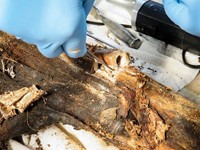
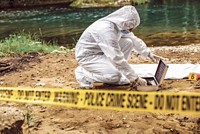
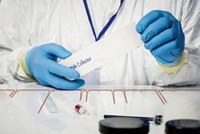

Join the conversation
Contact the reporter
Submit a Letter to the Editor for publication
Engage with us on Twitter